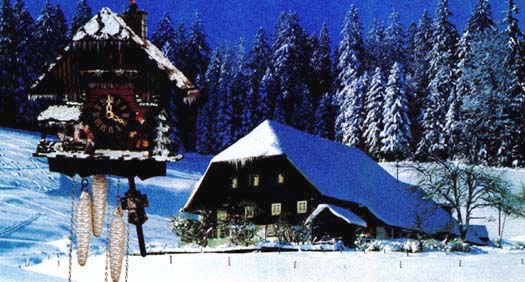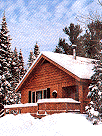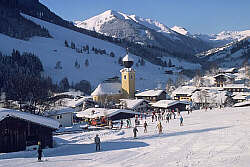

<

the Beautiful Eastern Alps and Zell am See!!
Small but Ohhhh so Fine!!

 |

If you are coming out of Lienz (best route for winter travelers), you would take route 108, arriving in "Mittersill in Salzburg province via the 3 1/2 mile Felbertauern toll tunnel (AS110), under the Tauern mountains, and taking route 168 east to "Zell am See". If there is chance that the road is open, go north over one of the highlights of the Eastern Alps---the "Grossglockner Mountain" highway. From Lienz you would go via route 107, make sure you stop on the way up the hill outside of "Iselsberg-Stronach" for a great panoramic view of the city. (It is well worth it). As you go over the ridge, you'll be entering Carinthia again. At Winklern the road follows the Moell River Valley, and after about 7 miles you'll come to "Doellach" im Moelltal, a summer and winter resort where gold was once mined. You will also find the Gothic St. Maria Cornach Church here, with its ornate Baroque interior, and the Museum in "Schloss Grosskirchheim", which records the history of local gold mining.
As you come to "Heiligenblut" (about 10 miles), the scenery becomes even more dramatic. Here you will find the small but notable parish church of St. Vincent, it's slender spire and narrow nave in harmony with nearby peaks. Completed in 1490 it contains a beautiful carved Late Gothic double alter nearly 36 feet high. The central painting, of the crowning of Mary, imparts a feeling of quiet power in this spare, high church.
From "Heiligenblut" the climb begins up the Carinthian side of the the Grossgloeckner. (toll). The peak itself is 12,470 feet, (of to the west) is the highest point in Austria. You can get closer if you wish (which you should), by taking the highly scenic but steep Gletscherstrasse highway westward up to the Gletscherbahn on the Franz-Josef-Plateau, where you will be rewarded with absolute breathtaking views of the Grossglockner peak and surrounding Alps, the vast glacier in the valley below, and on a clear day, even into Italy.
The Grossglockner road twists and turns as it struggles to the 8,370 foot Hochtor. At this point you've crossed into Salzburg province. Completed in 1935, the highway provides the only passage over the high mountain ranges anywhere between the Brenner Pass and the Radstadt Tauern Pass, which are about 100 miles apart.
You are now on Edelweiss-Strasse, where the rare whitestarred Edelweiss grows. A stop at the "Edelweissspitze" will give you a view out over East Tirol, Carinthia, and Salzburg.
The highway finally exhausts its hairpin curves and continues to "Bruck an der Grossglocknerstrasse". From here it's only about 5 miles west on route S11, then north on route 311 to "ZELL AM SEE".
"Zell am See" is located in the eastern Alps, directly on the Zeller Lake.
In about 790, a monastary was established here, the monks' cell giving the town its name. In the splendid Romanesque parish church of St. Hippolyte, built in 1217 and beautifully renovated in 1975, the statues of St. George and St. Florian on the west wall are unusually fine.
The 17th-century Renaissance "Rosenberg Castle", now the Town Hall, and the City Tower, this was originally a granary around the year 1100.
Take the cable lift (if running) which is virtually located in the center of town to the "Schmittenhoehe" for a 180-degree panorama that takes in the peaks of the Glockner and Tauern granite ranges to the south and west and the very different limestone ranges to the north. The romantic narrow-gauge "Pinzgauer Railroad" winds its way under steam power on a 2 hour trip through the Pinzgau, following the "Salzach River Valley" westward about 34 miles to "Krimml", where nearby you will find the famous "Krimmler Waterfalls", with a 1,300 foot drop, which you can see from the observation platform.
"Grand", in the style of the great-turn of the century resort hotels, this totally renovated house is probably the grandest place to stay in Zell. One of the restaurants is set in a semicircular room overlooking the lake.
"Salzburgerhof", a chalet not far from the lake and ski-lifts. This is the town's foremost hotels, where
comfort and personal service are a rule.
"Erlhof", an 11th century chalet-style estate house with vaulting and beaming ceilings which has been transformed into an inconspicuously modern and comfortable hotel. The location and view are exquisite, on a plateau above the east shore overlooking the lake.
"Zum Hirschen", located right in the heart of town, close to the shops and lake.
The mountain regions offer very little theater or music, but hotels in the main resort centers do put on folkloric evenings and other entertainment, some of which are even open if you are a non-member.
Nightlife centers in the hotels in the major resorts, such as "Saalfelden" and "Zell am See". Now, you have to remember where you are, with the exception of "Saalfelden", these are not slick, sophisticated bars and discos, but local hangouts where you can get to know the people.
In "Badgastein", the casino in the "Grand Hotel de l'Europe" has baccarat, blackjack, roulette, and slot machines. It's a great place to go if you like to do a little gambling, one thing though, coat & tie are required, oh, yes and don't forget your passport, they won't let you in without it. That is in just about any European casino you go to.
When you can finally tear yourself away from Zell am See continuing north on Route 311 you will come to "Maishofen", where the "Glemm Valley" opens to the west. About 9 miles west along the scenic road is the famous ski village of "Saalbach", at the valley's head lies "Hinterglemm". These two towns combined with "Kaprun" and "Zell am See" form a recreational region that offers a wide range of sports in all seasons. If you take the "Kohlmais" cable car north out of "Saalbach" to the top of the ridge you will have a 360° view of the surrounding mountain ranges.
By the way, there is a ban on cars in the village center.
About 6 miles further on Route 311 is "Saalfelden", located at the foot of the "Steinernes Meer" (Sea of Stone), this formidable ridge divides Austria from Germany. "Saalfelden" is first and foremost a summer resort and mountaineering center, but the country is also good for skiing. "SIGHTS", in Saalfelden include the 19th century Romanesque parish church with a Late Gothic winged alter. The nearby 14th century Farmach castle (now a retirement home), the 13th century "Lichtenberg Caste" and the "Christmas-manger-Museum" in "Ritzen Castle". Off at the edge of the "Steinernes Meer", you will find some signs that will lead you to a Late Gothic Chapel in a cave, containing a winged alterpiece near the stone pulpit and hermit's cell. The "Sea of Stone", is a climber's mecca, but please to not attept it unless you are very experienced. This is especially true of the 9,560' "Hochkoenig", east of Saalfelden.
If you continue north about 8 miles on Route 311, this is toward the German border, you come to "Weissbach bei Lofer" where you can visit the "Lamprechtsofenlochhoele Caves", with their great domes and waterfalls.
Well, this concludes another tour, but stay tuned there will be more to come!!
Other well know attractions in the area are "Vorderkaserklamm Gorge" and the "Hirschbichl Pass", a strategic route where several battles were faught during the "Napoleonic Wars".

|

|
 
|

 to other sites on the Web
to other sites on the Web






 View My Guestbook
View My Guestbook





